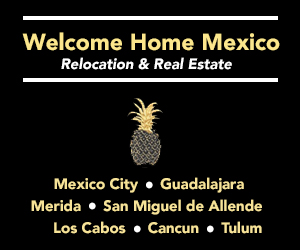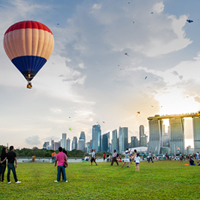Retire in Puerto Vallarta Guide
Summary: If Puerto Vallarta is on your retirement radar, our detailed Retire in Puerto Vallarta Guide is your go-to resource. Delve into the crucial aspects of life here, including living costs, climate, housing options, healthcare services, and residency procedures. We also explore the city's social dynamics, volunteering scenes, transportation, and how walkable its neighborhoods are.
Retiring in Puerto Vallarta is a dream come true for many international retirees. The city offers a unique blend of traditional Mexican culture and modern amenities, making it an ideal destination for those seeking a relaxed lifestyle in a tropical paradise. From the stunning beaches and vibrant local markets to the affordable cost of living and excellent healthcare, there's a lot to love about retiring in Puerto Vallarta. However, like any foreign country, it also presents its own set of challenges, including language barriers and adjusting to a new way of life.
Cost of Living
One of the biggest draws for retirees in Puerto Vallarta is the affordable cost of living. Housing, groceries, utilities, and healthcare are all significantly cheaper than in many Western countries. For example, a comfortable two-bedroom apartment in a desirable neighborhood can be rented for as little as $500 per month. Eating out is also very affordable, with a meal at a local restaurant costing around $10.
Climate
Puerto Vallarta boasts a tropical climate with warm temperatures year-round. The city enjoys over 300 days of sunshine per year, making it a paradise for sun-lovers. However, it's worth noting that the summer months can be quite humid, and the city does experience a rainy season from June to October.
Healthcare
Healthcare in Puerto Vallarta is of a high standard, with several modern hospitals and clinics offering a wide range of medical services. Many doctors and medical staff speak English, and the cost of healthcare is significantly lower than in the U.S. and Canada.
Public Healthcare System
International retirees can enroll in Mexico's public healthcare system, known as Instituto Mexicano del Seguro Social (IMSS). However, many choose to use private healthcare due to the shorter waiting times and higher standard of care. It's also common for retirees to maintain a health insurance policy from their home country for major medical issues.
Residency Options
There are several options for obtaining residency in Mexico, including temporary and permanent residency visas. These are relatively easy to obtain, provided you can prove you have sufficient funds to support yourself.
Parks and Recreational Activities
Puerto Vallarta is home to numerous parks and recreational activities. The Malecon, a beachside promenade, is a popular spot for walking and people-watching. The city also offers a range of water sports, golf courses, and hiking trails in the nearby Sierra Madre Mountains.
Restaurants
Food lovers will be spoilt for choice in Puerto Vallarta, with a wide range of restaurants offering everything from traditional Mexican cuisine to international dishes. Some popular spots include Cafe des Artistes, La Palapa, and El Arrayan.
Learning the Language
While many locals in Puerto Vallarta speak English, learning Spanish can greatly enhance your retirement experience. The Spanish Experience Center offers a range of Spanish courses for all levels.
Local Culture
The locals in Puerto Vallarta are known for their friendliness and hospitality. The city has a relaxed, laid-back vibe and a strong sense of community, making it easy for retirees to feel at home.
Markets
Puerto Vallarta has several local markets where you can buy fresh produce, handmade crafts, and traditional Mexican food. The Old Town Farmers Market is a favorite among locals and expats alike.
Meeting People and Volunteering
There are plenty of opportunities for retirees to meet people and get involved in the community in Puerto Vallarta. Volunteering is a great way to give back and make new friends. Organizations like PEACEAnimals and Pasitos de Luz are always looking for volunteers.
Housing
Most retirees in Puerto Vallarta opt for apartments or condos, either in the city center or in the quieter neighborhoods on the outskirts. The Romantic Zone, Marina Vallarta, and Nuevo Vallarta are all popular areas for retirees.
Transportation
Public transportation in Puerto Vallarta is reliable and inexpensive, and many areas are walkable. While having a car can be convenient for exploring the surrounding areas, it's not necessary for day-to-day life in the city.
About the Author
 Betsy Burlingame is the Founder and President of Expat Exchange and is one of the Founders of Digital Nomad Exchange. She launched Expat Exchange in 1997 as her Master's thesis project at NYU. Prior to Expat Exchange, Betsy worked at AT&T in International
and Mass Market Marketing. She graduated from Ohio Wesleyan University
with a BA in International Business and German.
Betsy Burlingame is the Founder and President of Expat Exchange and is one of the Founders of Digital Nomad Exchange. She launched Expat Exchange in 1997 as her Master's thesis project at NYU. Prior to Expat Exchange, Betsy worked at AT&T in International
and Mass Market Marketing. She graduated from Ohio Wesleyan University
with a BA in International Business and German.
Some of Betsy's articles include 12 Best Places to Live in Portugal, 7 Best Places to Live in Panama and 12 Things to Know Before Moving to the Dominican Republic. Betsy loves to travel and spend time with her family. Connect with Betsy on LinkedIn.
Additional Information:
- Retire in Puerto Vallarta Guide
- 7 Tips for Living in Puerto Vallarta
- Pros & Cons of Living in Puerto Vallarta
- Driving in Puerto Vallarta
- Cost of Living in Puerto Vallarta
- Health Care in Puerto Vallarta
- Discover the Best of Puerto Vallarta
- Healthcare & Health Insurance in Mexico
- Best Places to Live in Mexico
- Real Estate in Mexico
- Cost of Living in Mexico
- Pros and Cons of Living in Mexico 2025
- 2025 Guide to Moving to Mexico
- Members Talk about the Cost of Living in Mexico





